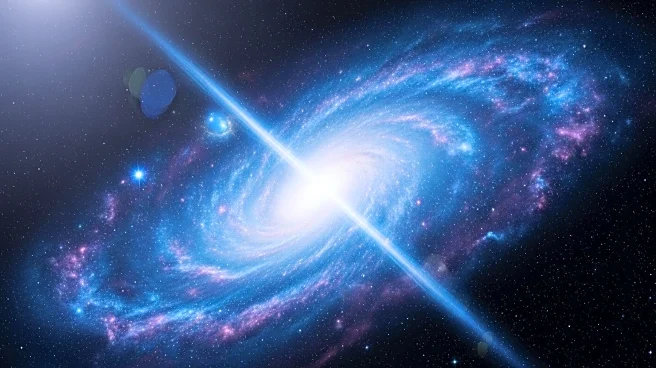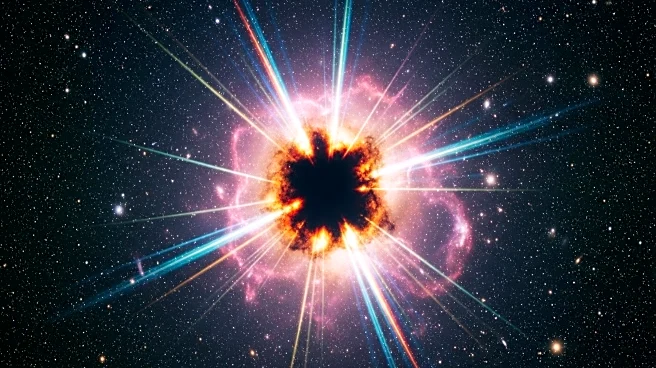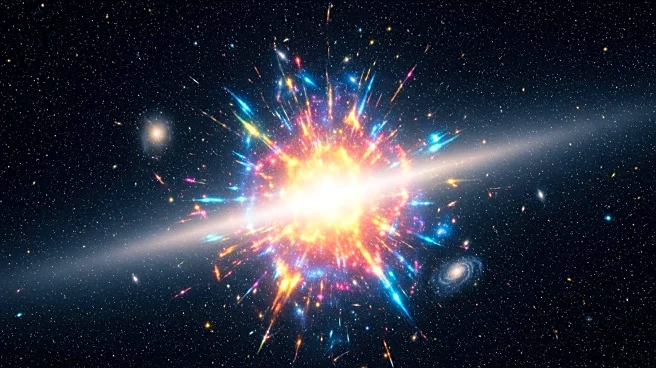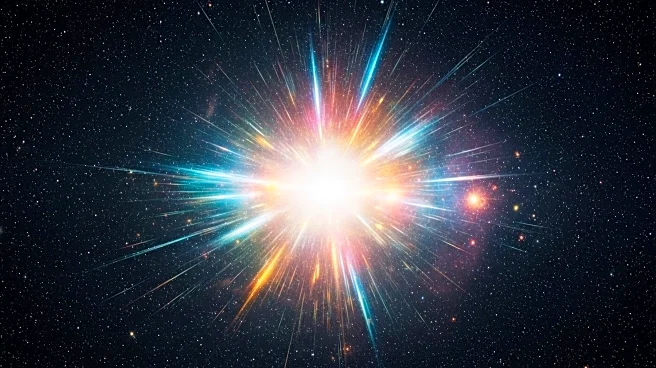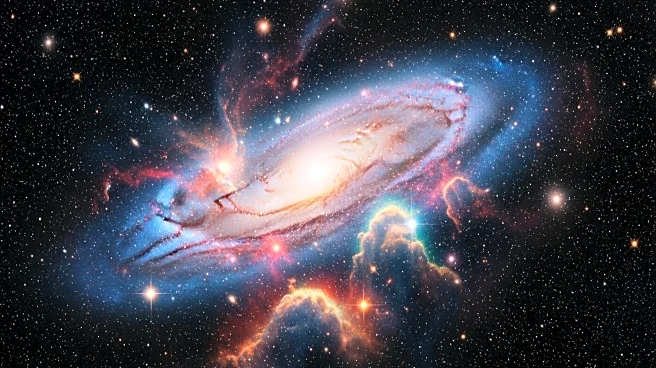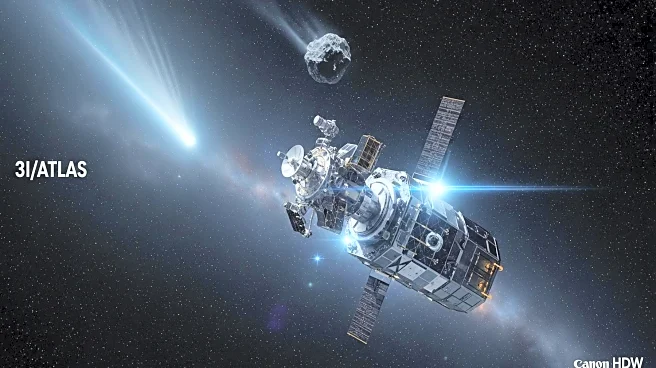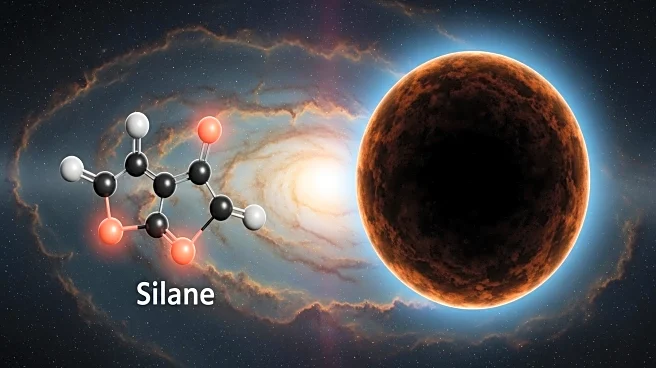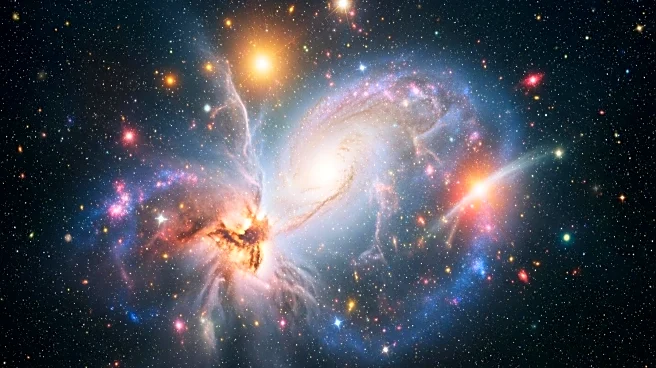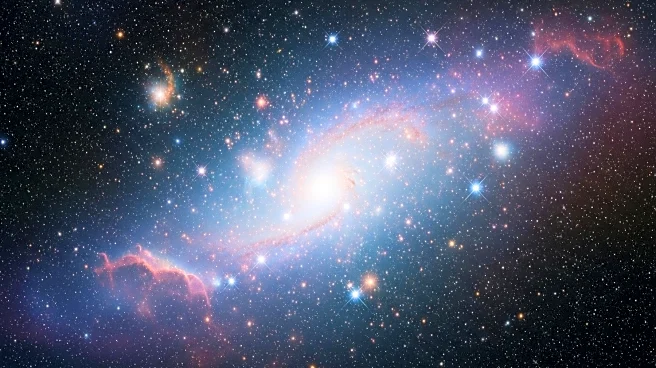What's Happening?
NASA's James Webb Space Telescope has captured an immense stellar jet erupting from a massive star located in the nebula Sharpless 2-284, situated 15,000 light-years away in the outer reaches of the Milky Way. The jet, stretching across 8 light-years, is a rare phenomenon, resembling a double-bladed lightsaber. The central protostar, weighing as much as ten Suns, is driving this outflow of molecular hydrogen. The discovery was unexpected, as researchers were unaware of such a massive star with a super-jet prior to Webb's observation. The jet's structure provides insights into the formation of massive stars, particularly in low metallicity environments, which are similar to conditions in the early universe.
Why It's Important?
The discovery of this stellar jet is significant as it offers a unique opportunity to study the formation mechanisms of massive stars in environments with low metallicity. Understanding these processes is crucial for comprehending the evolution of galaxies and the universe. The findings challenge existing theories about star formation, suggesting that massive stars can form through a stable disk around the star, as opposed to chaotic competitive accretion. This research could lead to new models and theories about star formation, providing a 'laboratory' to study cosmic history and the conditions of the early universe.
What's Next?
The discovery opens avenues for further research into massive star formation and the role of stellar jets in the evolution of galaxies. Scientists may use Webb's observations to test and refine theoretical models of star formation. Additionally, the study of other massive stars in the Milky Way's outer regions could reveal more about the conditions and processes that govern star formation. The findings may also influence future missions and observations aimed at understanding the universe's history and structure.
Beyond the Headlines
The detection of the stellar jet highlights the importance of advanced telescopes like Webb in uncovering cosmic phenomena that were previously unknown. The study of low metallicity environments provides insights into the universe's early conditions, potentially influencing our understanding of cosmic evolution. The research underscores the collaborative efforts of international space agencies in advancing astronomical knowledge.
